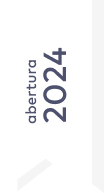

A microcosm of Alberto Manguel’s literary universe
Begun in his youth, the library of Alberto Manguel now counts approximately 40,000 titles.
The library constitutes a microcosm of Manguel’s literary universe – his tastes, interests and friends – and has been an essential creative source and inspiration behind many of his own works, such as The Dictionary of Imaginary Places co-authored with Gianni Guadalupi (1980), A History of Reading (1996), A Reading Diary (2004), The Library at Night (2006), Curiosity (2015), and many others. Object of several documentaries and creative initiatives, the library is an exceptional starting point for discovery: a fine and rare treasure for those who love literature.
At his home in France (until 2015), Manguel’s library also became a coveted haven for other writers from all corners of the globe: over a thousand books are inscribed or carry notes by these visitors as well as by Manguel’s early mentors, including the legendary Jorge Luis Borges, and the hundreds of other writers in his vast literary circles, among them Margaret Atwood, Salman Rushdie, and Marguerite Yourcenar.
Such inscribed and annotated books provide, especially at this scale, a rare and intimate glimpse into networks and relationships of the international twentieth-century literary community.
Predominantly a collection of literature and non-fiction in the arts and humanities, the particular selection, combinations and juxtapositions of titles support the discovery of resonances and counterpoints across regions, languages, and cultures. Clusters of books by and about a given author highlight authors essential to Manguel’s reading and to his writing; among these, readers will find canonical names like Dante, Cervantes, Zola, Lewis Carroll, Borges or Atwood, but also a vast number of less known names in whose texts Manguel discovered an interesting voice.
The mixture of ancient, medieval and modern voices contributes to a deep and heterogenous expression of the principal themes and questions of humanity.
Those interested in book history will also find source material in terms of historical editions, examples from early centuries of print, and rare items including manuscripts and volumes with inscriptions, annotations or other kinds provenance evidence
The language of images also holds a key place. Thousands of illustrated editions and hundreds of artists’ books and books about art offer a broad and valuable set of examples for the study of book design and illustration techniques, including some with original artwork.
The Library aims at creating an atmosphere of creative and intellectual exchange, an interactive multilingual and multicultural universe.
The Manguel library donated to the city of Lisbon will continue to be a lived library: a unique environment created out of both love and respect for the power of the written word.
